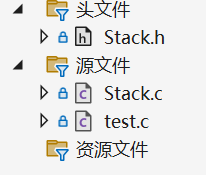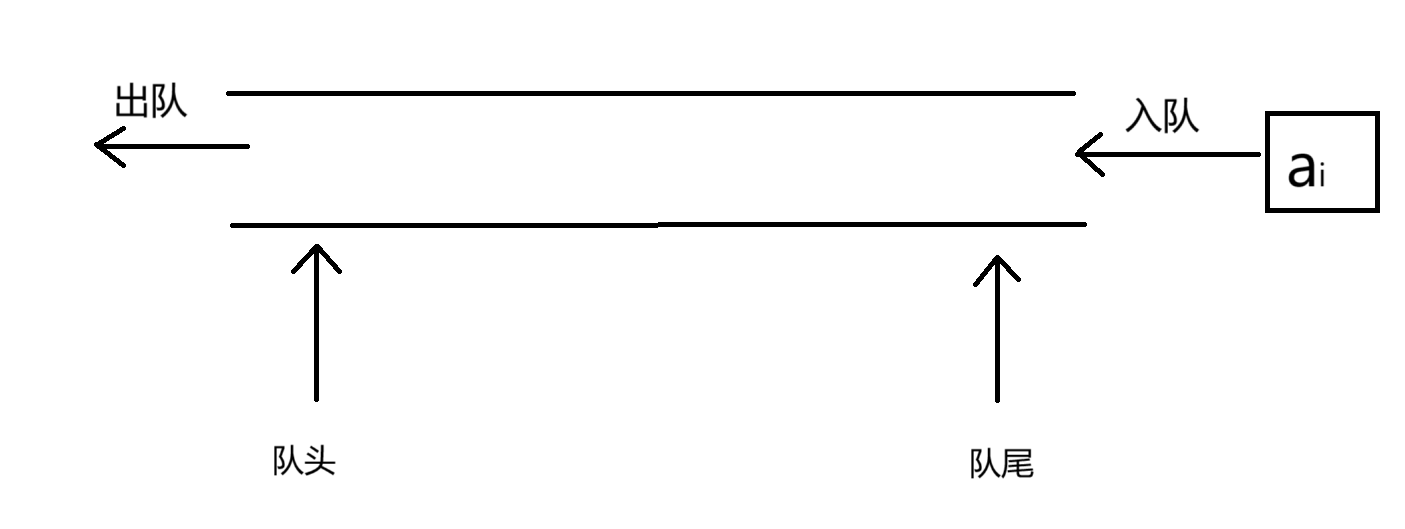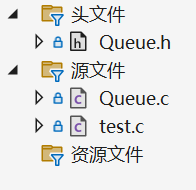【数据结构】栈和队列的实现
目录
1 栈的概念和结构
2 栈的实现
2.1 Stack.h文件
2.2 Stack.c文件
2.3 test.c文件
3 队列的概念及结构
4 队列的实现
4.1 Queue.h文件
4.2 Queue.c文件
4.3 test.c文件
1 栈的概念和结构
栈是一种特殊的线性表,只允许在固定的一段进行插入和删除元素操作。进行数据插入和删除操作的一端称为栈顶,另一端称为栈底。栈中的数据元素遵守后进先出的原则。
进栈:栈的插入操作叫做进栈/压栈/入栈,入数据在栈顶。
出栈:栈的删除操作叫做出栈。出数据也在栈顶。

2 栈的实现
栈的实现一般可以用数组或者链表实现,相对而言数组的实现更优一些。数组在尾上插入数据的代价比较小。本文采用数组实现的方法。

栈的实现需要创建一个头文件Stack.h,一个源文件Stack.c和一个测试文件test.c,用来测试功能。

2.1 Stack.h文件
#pragma once#include <stdio.h>
#include <stdbool.h>
#include <stdlib.h>
#include <assert.h>
typedef int STDataType;
typedef struct Stack
{STDataType* arr;int top;//指向栈顶元素的下一个位置int capacity;//容量
}ST;//栈的初始化
void STInit(ST* pst);
//插入数据(入栈)
void STPush(ST* pst, STDataType x);
//删除数据(出栈)
void STPop(ST* pst);
//获取栈顶数据
STDataType STTop(ST* pst);
//判断栈是否为空
bool STEmpty(ST* pst);
//获取栈里的数据个数
int STSize(ST* pst);
//栈的销毁
void STDestroy(ST* pst);2.2 Stack.c文件
#include "Stack.h"
//栈的初始化
void STInit(ST* pst)
{pst->arr = NULL;pst->capacity = 0;pst->top = 0;
}
//插入数据(入栈)
void STPush(ST* pst, STDataType x)
{assert(pst);//判断空间是否足够,不够就扩容if (pst->top == pst->capacity){int newcapacity = pst->capacity == 0 ? 4 : 2 * pst->capacity;STDataType* tmp = (STDataType*)realloc(pst->arr, sizeof(STDataType) * newcapacity);if (tmp == NULL){perror("realloc");exit(1);}pst->capacity = newcapacity;pst->arr = tmp;}//插入数据pst->arr[pst->top] = x;pst->top++;
}
//删除数据(出栈)
void STPop(ST* pst)
{assert(pst);assert(pst->top > 0);pst->top--;
}
//获取栈顶数据
STDataType STTop(ST* pst)
{assert(pst);assert(pst->top > 0);return pst->arr[pst->top - 1];
}
//判断栈是否为空
bool STEmpty(ST* pst)
{assert(pst);return pst->top == 0;
}
//获取栈里的数据个数
int STSize(ST* pst)
{assert(pst);return pst->top;
}
//栈的销毁
void STDestroy(ST* pst)
{free(pst->arr);pst->arr = NULL;pst->top = 0;pst->capacity = 0;
}2.3 test.c文件
#include "Stack.h"
int main()
{ST s;STInit(&s);STPush(&s, 1);STPush(&s, 2);STPush(&s, 3);STPush(&s, 4);while (!STEmpty(&s)){printf("%d\n", STTop(&s));STPop(&s);}//printf("%d\n", STTop(&s));//STPop(&s);STDestroy(&s);return 0;
}3 队列的概念及结构
队列只允许在一端插入数据,在另一端进行删除数据操作的特殊线性表。队列中的数据元素遵循先进先出的原则。插入数据的一端称为队尾,进行删除操作的一端称为队头。

4 队列的实现
队列可以用数组和链表的结构实现,使用链表的结构实现更好一些,如果使用数组的结构,出队列在数组头上出数据,效率比较低。本文采用链表的结构实现。
实现队列需要创建一个头文件Queue.h,源文件Queue.c,测试文件test.c,用来测试功能。

4.1 Queue.h文件
#pragma once#include <stdio.h>
#include <stdlib.h>
#include <stdbool.h>
#include <assert.h>typedef int QDataType;typedef struct QueueNode
{struct QueueNode* next;QDataType val;
}QNode;typedef struct Queue
{QNode* phead;//头指针QNode* ptail;//尾指针int size;//队列内数据个数
}Queue;//初始化
void QueueInit(Queue* pq);
//插入数据(队尾)
void QueuePush(Queue* pq, QDataType x);
//删除数据(队头)
void QueuePop(Queue* pq);
//取出队头数据
QDataType QueueFront(Queue* pq);
//取出队尾数据
QDataType QueueBack(Queue* pq);
//判空
bool QueueEmpty(Queue* pq);
//统计队列数据个数
int QueueSize(Queue* pq);
//销毁队列
void QueueDestroy(Queue* pq);4.2 Queue.c文件
#include "Queue.h"
//初始化
void QueueInit(Queue* pq)
{assert(pq);pq->phead = NULL;pq->ptail = NULL;pq->size = 0;
}
//插入数据(队尾)
void QueuePush(Queue* pq, QDataType x)
{assert(pq);QNode* newnode = (QNode*)malloc(sizeof(QNode));if (newnode == NULL){perror("malloc");exit(1);}newnode->next = NULL;newnode->val = x;if (pq->ptail==NULL){pq->ptail = pq->phead = newnode;}else{pq->ptail->next = newnode;pq->ptail = pq->ptail->next;}pq->size++;
}
//删除数据(队头)
void QueuePop(Queue* pq)
{assert(pq);assert(pq->size != 0);if (pq->phead == pq->ptail){free(pq->phead);pq->phead = NULL;pq->ptail = NULL;}else{QNode* next = pq->phead->next;free(pq->phead);pq->phead = next;}pq->size--;
}
//取出队头数据
QDataType QueueFront(Queue* pq)
{assert(pq);assert(pq->phead);return pq->phead->val;
}
//取出队尾数据
QDataType QueueBack(Queue* pq)
{assert(pq);assert(pq->ptail);return pq->ptail->val;
}
//判空
bool QueueEmpty(Queue* pq)
{assert(pq);return pq->size == 0;
}
//销毁队列
void QueueDestroy(Queue* pq)
{assert(pq);QNode* cur = pq->phead;while (cur){QNode* next = cur->next;free(cur);cur = next;}pq->phead = pq->ptail = NULL;pq->size = 0;
}
//统计队列数据个数
int QueueSize(Queue* pq)
{assert(pq);return pq->size;
}4.3 test.c文件
#include "Queue.h"
int main()
{Queue q;QueueInit(&q);QueuePush(&q, 1);QueuePush(&q, 2);QueuePush(&q, 3);QueuePush(&q, 4);while (!QueueEmpty(&q)){printf("%d ", QueueFront(&q));QueuePop(&q);}QueueDestroy(&q);return 0;
}以上就是栈和队列的结构和代码实现,是依据顺序表和链表的原理来实现栈和队列,感兴趣的可以查看我之前的顺序表和链表的文章,如果这篇文章对你有用,可以点点赞哦,你的支持就是我写下去的动力,后续会不断地分享知识。
